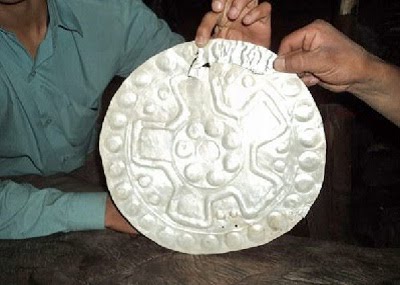18th century engraving shows the different tribes that inhabited South America. Getty Images
AMAZONIA. New archaeological studies about the Amazon has been changing the traditional idea of a virgin forest practically uninhabited in the pre-colombian times.
Recent discoveries reveal a region that could been occupied for more than 20 millions of persons; indigenous, it is assumed. They lived in highly populated villages near of rivers Tapajos, Madeira and Solimoes, for example.
However, the scenery was much diferent of the mythological Eldorado of the legends. According the researcher of the Universidade Federal do Amazonas (Amazon Federal University), Helena Lima:
'What we know, today, is that these populations were numerous and they had technical practices much more advanced than the primitivism that we imagined until recently.
The coordinator of the Central Amazônia project, who works in the Museu de Arqueologia e Antropologia da USP (Archaeologic and Anthropologic Museum, São Paulo University), Eduardo Neves, belives that around 5,5 million of persons lived in certain areas of the pre colombian Amazon where there were a great variation of languages and political organizations in their many villages.
The researcher of the Anthropology Department of at the University of Florida, Michael Heckenberger, studying areas of the Alto Xingu (Upper Xingu) made an estimated that 50,000 indigenous lived in an area of 20 square kilometers.
He says: This consists of a larger population that we find in many countries of Europe today.
According the studies, the villages of the Alto Xingu was 10 or 15 times majors than that exist actually in the region. They were organized a central and circular square surrounded by tabas (huts).
These huts were builded in a perfect ring along the periphery of the square, were surrounded by ditches to 2 km in length. Heckenberger still says that in the Alto Xingu, where today there is a village, there were 12.
Professor at University of Florida, Colombian researcher Augusto Oyuela-Caycedo, adds that in other regions of the Amazon, the settings were different, with linears villages, in front of the rivers.
Regarding the organization, the communities were not exactly as tribes. They were more like societies in its infancy. Archaeological evidence indicates a state of expansion.
Handling of soil
One of the proofs of the existence of these bigger villages and their development on the first steps of a civilization process is the black soil.
Oyuela explains: For many years it was thought that the black soil was the result of natural phenomena such as volcanic ash.
The resistance to the idea that the black earth was resulted by human work came from a theory that the Amazon was largely an inhospitable place to the development of complex societies with large villages.
But the new discoveries have shown that there was the use of organic matter and coal burned at high temperatures to improve the quality of the Amazonian soil.
The plantations were made in small amounts of land - spaces that were opened in the middle by large tracts of forests.
Oyuela found black soil in the Alto Amazon (Upper Amazon), in 2005, near the city of Iquitos.
The region, called Quistococha was a large village which occupied up to 20 hectares dated around the years 900 AD.
In regions such as the high river Madeira is found black soil dated from four thousand years.
In the middle Amazon River were found pottery and evidence of agricultural occupations with over two thousand years and traces of nomadic culture of eight thousand years ago.
SOURCE: Nova teoria afirma que Amazônia pré-colombiana foi populosa.
IN Ultimo Segundo/IG, published in 20/09/2011
[http://ultimosegundo.ig.com.br/ciencia/nova+teoria+afirma+que+amazonia+precolombiana+foi+populosa/n1237780376244.html]





